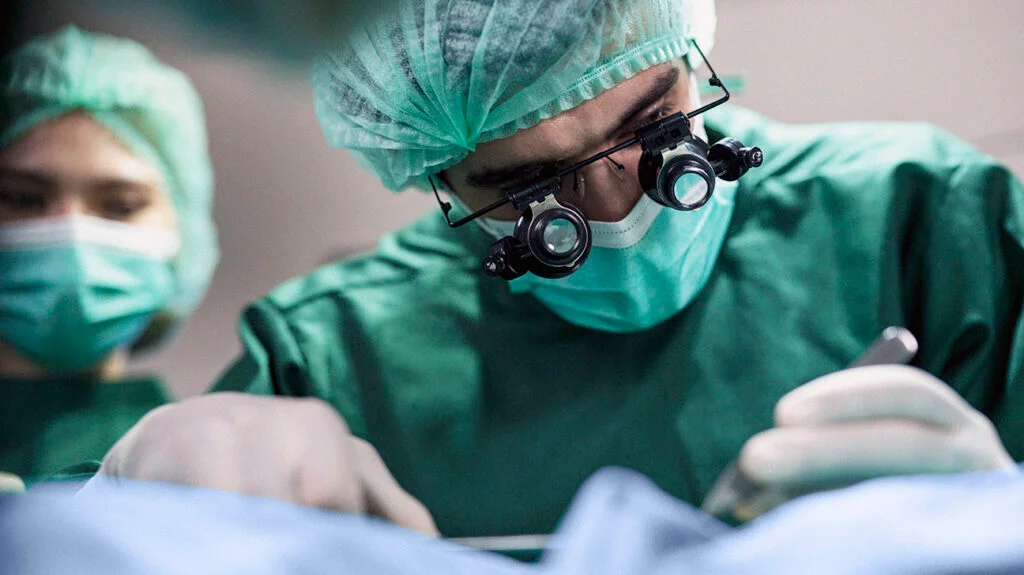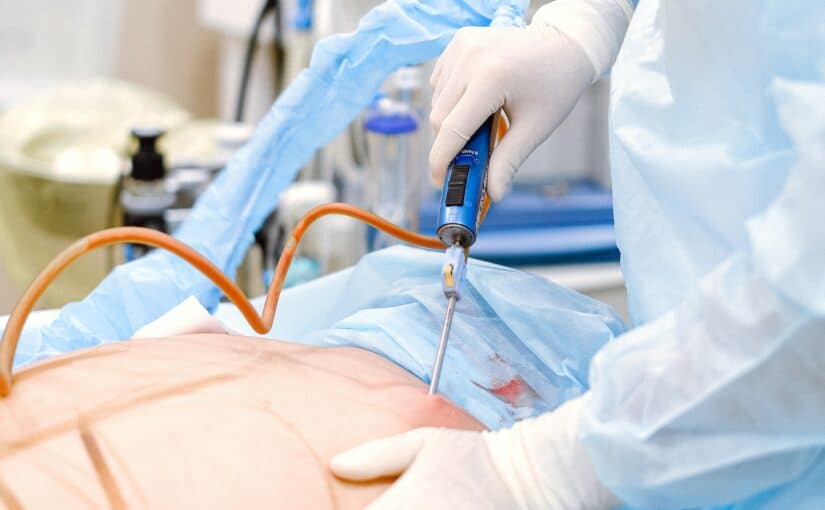Dercum’s disease can be a heavy burden. It causes painful fatty tumors, making daily life tough. Traditional treatments often fall short, leaving many seeking relief. Liposuction for Dercum’s disease offers a promising solution. This procedure targets the unwanted fat and can significantly reduce discomfort.
Unlike other methods that may only address symptoms, liposuction aims to remove the root cause of the pain. Patients often experience improved mobility and quality of life after surgery. Understanding this option is crucial for those affected by Dercum’s disease. With expert guidance, you can explore how liposuction might change your journey toward relief.
Key Takeaways
-
Dercum’s disease involves painful fatty tumors, and understanding the condition is crucial for those affected. Educate yourself about the symptoms and treatment options available.
-
Liposuction can be an effective treatment for managing the pain and discomfort associated with Dercum’s disease. Consider discussing this option with your healthcare provider if you’re struggling with symptoms.
-
Not everyone is a suitable candidate for liposuction. Factors like overall health and specific medical conditions should be evaluated before proceeding with the procedure.
-
Preparing for liposuction involves following your doctor’s pre-operative instructions closely to ensure a smooth surgery and recovery process.
-
Post-operative care is essential for a successful recovery. Follow all post-surgery guidelines and attend follow-up appointments to monitor your healing.
-
Non-surgical alternatives also exist, so explore all available options to find what best suits your needs and improves your quality of life.
Understanding Dercum’s Disease
Definition
Dercum’s disease is a rare condition. It features painful fatty deposits in various parts of the body. These deposits, known as lipomas, can cause significant discomfort. The exact cause of Dercum’s disease remains unclear. Genetic factors may play a role, but more research is needed.
Symptoms
Individuals with Dercum’s disease often experience chronic pain. This pain can be severe and debilitating. Many report feeling fatigued and weak. Cognitive disturbances are also common. These can include memory issues and difficulty concentrating. The combination of these symptoms affects daily life significantly.
Diagnosis Challenges
Diagnosing Dercum’s disease can be difficult. Its symptoms overlap with other conditions like fibromyalgia and chronic fatigue syndrome. Doctors may not recognize it right away. Misdiagnosis can lead to ineffective treatments and prolonged suffering.
Healthcare providers rely on patient history and physical examinations for diagnosis. Imaging tests may help identify fatty deposits. However, no specific test exists for Dercum’s disease. This lack of clear diagnostic criteria adds to the confusion.
Management Options
Managing Dercum’s disease requires a multi-faceted approach. Pain management is crucial for improving quality of life. Medications like anti-inflammatories or pain relievers are often prescribed. Physical therapy may also help in reducing discomfort and improving mobility.
Surgical options, such as liposuction, are considered in some cases. Liposuction aims to remove painful fatty deposits. Patients should consult with specialists to weigh the benefits and risks.
Emotional Impact
Living with Dercum’s disease can take an emotional toll. Chronic pain and fatigue often lead to frustration and depression. Support groups provide a space for individuals to share experiences and coping strategies.
Understanding this condition helps raise awareness about its impact on patients’ lives. More research is necessary to improve diagnosis and treatment options.
Liposuction as a Treatment Option
Fat Reduction
Liposuction plays a significant role in treating Dercum’s disease. This procedure targets localized fat deposits that cause discomfort and pain. It involves removing excess fat through suction. Patients often experience immediate relief from pressure on nerves and tissues.
The procedure can be particularly beneficial for those struggling with painful lipomas. By reducing the volume of fatty tissue, liposuction can alleviate some of the physical burdens associated with the disease. Many patients report feeling lighter and more mobile after treatment.
Quality of Life
Liposuction can improve the quality of life for individuals with Dercum’s disease. Initial results often include reduced pain and increased mobility. Patients may find it easier to engage in daily activities. Enhanced comfort can lead to better emotional health and self-esteem.
However, these benefits may not last indefinitely. Over time, some patients notice a return of symptoms or discomfort. The body may continue to produce new fat deposits, which can diminish the initial improvements gained from surgery.
Contraindications
Certain factors limit liposuction’s effectiveness for some patients. Those with recurrent lipomas may not be suitable candidates for this procedure. Removing fat does not prevent new lipomas from forming. Therefore, repeated surgeries may be necessary.
Patients should consider their overall health before undergoing liposuction. Conditions such as diabetes or heart issues could complicate recovery. Consulting a qualified medical professional is crucial to determine if liposuction is appropriate.
Evaluating Candidate Suitability
Criteria for Candidates
Candidates for liposuction in Dercum’s disease must meet specific criteria. First, they should have localized fat deposits. These areas often include the abdomen, thighs, and upper arms. Patients with these targeted fat deposits are more likely to benefit from the procedure.
Not all patients qualify. Those with widespread or diffuse pain may not be suitable for liposuction. The procedure aims to remove localized fat, but it does not address general pain issues. Doctors assess patients carefully to ensure they fit the criteria.
Excluding Specific Conditions
Exclusion of certain conditions is crucial. Patients with recurrent lipomas should not undergo liposuction. Lipomas are benign tumors of fatty tissue that can reappear after removal. If a patient has a history of recurrent lipomas, this raises concerns about the effectiveness of the procedure.
Doctors consider the patient’s overall health. Pre-existing conditions like diabetes or cardiovascular issues can complicate surgery. These factors increase risks during and after the procedure. A thorough medical evaluation helps ensure safety.
Health Status Considerations
Patient health plays a significant role in determining suitability. Doctors evaluate weight, lifestyle, and mental health status. A stable weight is essential before considering liposuction. Patients who are significantly overweight may need to lose weight first.
Mental health is also important. A positive mindset helps patients cope with recovery and manage expectations. Those struggling with body image issues might benefit from counseling before surgery.
Patients must understand potential risks associated with liposuction. Common complications include infection, scarring, and fluid accumulation. Discussing these risks openly allows candidates to make informed decisions.
Importance of Professional Evaluation
A professional evaluation is necessary for candidates considering liposuction for Dercum’s disease. Surgeons assess not only physical health but also emotional readiness for surgery. They provide a comprehensive consultation to discuss goals and outcomes.
Surgeons often use imaging tools to identify fat deposits accurately. This helps in planning the procedure and setting realistic expectations for results.

Preparing for the Procedure
Pre-operative Assessments
Patients must undergo several pre-operative assessments before liposuction for Dercum’s disease. This includes a thorough medical history review. Doctors check for any underlying health issues that could affect surgery. Blood tests may be required to assess overall health. Imaging studies can help visualize fatty tissue distribution.
Consultations with specialists are also crucial. A plastic surgeon often leads these discussions. They explain the procedure in detail and outline what to expect. Mental health evaluations may occur too, as emotional readiness is essential.
Setting Realistic Expectations
Setting realistic expectations is vital for patient satisfaction. Many people believe liposuction will provide instant results. However, it’s important to understand that outcomes vary. The amount of fat removed depends on individual conditions and goals.
Surgeons should communicate potential results clearly. Patients should know that liposuction is not a cure for Dercum’s disease. It can relieve symptoms but does not eliminate the condition entirely. Understanding this helps avoid disappointment after the surgery.
Understanding the Procedure
A thorough understanding of the procedure and recovery process is necessary. Patients should learn about how liposuction works. Surgeons use techniques like tumescent liposuction or ultrasound-assisted liposuction. Each method has different benefits and risks.
Recovery time varies among patients. Most can expect some swelling and bruising post-surgery. Pain management options will be discussed, including medications or therapies.
Patients should prepare for follow-up appointments too. These visits allow doctors to monitor healing and address concerns. Knowing what to expect during recovery helps reduce anxiety.
Surgical Techniques and Considerations
Minimal-Incision Technique
The minimal-incision technique is often used in liposuction for Dercum’s disease. This method involves making small cuts in the skin rather than larger incisions. The smaller incisions lead to less scarring and faster recovery times. Patients typically experience less pain post-surgery as well.
Surgeons can remove painful lipomas effectively using this technique. The precision of this method helps target specific areas, reducing damage to surrounding tissues. Patients benefit from a quicker return to daily activities due to the reduced trauma from smaller incisions.
Precision in Targeting Lipomas
Targeting painful lipomas is crucial for successful treatment. These growths can cause significant discomfort for those with Dercum’s disease. Surgeons must accurately locate and remove these lipomas while preserving healthy tissue.
Imaging techniques like ultrasound or MRI may assist during the procedure. These tools help identify the size and location of lipomas before surgery. Accurate targeting minimizes complications and improves outcomes.
Surgeons often use a tumescent technique, which involves injecting a solution into the area before removal. This solution numbs the area and reduces bleeding. It enhances precision during surgery, allowing for more effective removal of painful lipomas.
Potential Complications
Like any surgical procedure, liposuction carries risks. Possible complications include infection, bleeding, and uneven results. Surgeons take steps to minimize these risks during surgery.
Infection is a primary concern. Surgeons follow strict sterilization protocols to prevent it. They may prescribe antibiotics before and after surgery as a precaution.
Bleeding can occur during or after the procedure. Surgeons monitor blood loss closely and manage it promptly if it arises. They may use compression garments post-surgery to reduce swelling and support healing.
Uneven results can happen if lipomas are not removed uniformly. Surgeons aim for symmetry but sometimes require follow-up procedures to correct any issues. Open communication with patients about expectations is essential.
Overall, understanding these surgical techniques and considerations is vital for patients with Dercum’s disease. They should feel informed about what to expect during their liposuction procedure.
Post-Operative Care and Recovery
Recovery Timeline
Most patients experience a recovery timeline that spans several weeks. The first few days after liposuction may involve swelling and bruising. Patients often feel soreness in the treated areas. This discomfort usually peaks around day three but begins to improve thereafter.
By the end of the first week, many can return to light activities. However, strenuous exercise should be avoided for at least four to six weeks. Full recovery might take up to three months. During this time, the body continues to heal and adjust to its new shape.
Follow-Up Appointments
Follow-up appointments are crucial for monitoring progress after surgery. Typically, these appointments occur within one week of the procedure. The surgeon will assess how well the body is healing and address any concerns.
Patients should not skip these visits. They allow the surgeon to check for complications such as infection or unusual swelling. Regular check-ins help ensure that healing proceeds as expected and adjustments can be made if necessary.
Pain Management
Managing pain effectively is essential for a smooth recovery. Doctors usually prescribe pain medication for the initial days post-surgery. Over-the-counter pain relievers may also be recommended as symptoms subside.
Rest is one of the best ways to promote healing. Patients should take it easy during the first few days. Elevating the treated areas can help reduce swelling and discomfort.
Wearing compression garments is important. These garments support the healing process and minimize swelling. Patients should follow their surgeon’s guidelines on when and how long to wear them.
Promoting Healing
To promote healing, patients should stay hydrated and eat nutritious foods. A balanced diet aids in recovery by providing essential vitamins and minerals. Foods rich in protein can particularly support tissue repair.
Gentle movement is encouraged after a few days. Short walks can help improve circulation without putting too much strain on the body. However, heavy lifting or intense workouts must wait until cleared by a doctor.
Avoiding smoking and alcohol is also important during recovery. Both substances can hinder healing and increase the risk of complications.
Emotional Support
Patients may experience various emotions during recovery from liposuction for Dercum’s disease. It’s normal to feel anxious or frustrated about progress. Seeking emotional support from friends, family, or support groups can be beneficial.
Connecting with others who have undergone similar procedures can provide comfort and reassurance. Sharing experiences helps normalize feelings and offers practical advice.
Comparing Non-Surgical Alternatives
Medication Options
Medications can provide relief for those with Dercum’s disease. Certain drugs aim to reduce pain and inflammation. Non-steroidal anti-inflammatory drugs (NSAIDs) are commonly prescribed. They help manage discomfort but do not eliminate lipomas. Other medications, like corticosteroids, may also be used to decrease swelling.
Patients should note that while these options can ease symptoms, they do not address the underlying condition. Long-term use of NSAIDs can lead to gastrointestinal issues. Therefore, regular consultations with healthcare providers are essential.
Physical Therapy
Physical therapy is another alternative treatment. It focuses on improving mobility and reducing pain through targeted exercises. Therapists often design personalized programs to strengthen muscles and enhance flexibility.
This approach can improve overall quality of life for patients. Some studies suggest that physical therapy may help reduce the size of lipomas over time. However, results vary among individuals, and it may require consistent effort.
Effectiveness Comparison
Comparing non-surgical alternatives to liposuction reveals key differences. Liposuction removes fat deposits directly, offering immediate results. In contrast, medications and physical therapy take longer to show effects, if at all.
While liposuction has its benefits, it carries risks such as infection and scarring. Non-surgical methods tend to have fewer complications but may require ongoing treatment. Patients need to weigh their options carefully based on their health status and personal preferences.
Combining Treatments
Combining treatments can be a strategic approach for managing Dercum’s disease. Using medication alongside physical therapy may enhance symptom relief. This combination allows patients to experience both immediate and long-term benefits.
Liposuction could also be considered as part of a broader treatment plan. For example, a patient might start with medication and physical therapy before opting for surgery if necessary. This comprehensive management strategy ensures that all aspects of the condition are addressed effectively.
Quality of Life Improvements
Pain Reduction
Patients often report significant pain reduction after undergoing liposuction for Dercum’s disease. Many individuals experience a decrease in discomfort levels. This change can lead to improved mobility. Increased ease in movement allows patients to engage more in daily activities. For instance, simple tasks like walking or climbing stairs become less daunting.
Research shows that about 70% of patients notice improvements in pain after the procedure. A study published in the Journal of Pain Research found that 80% of participants felt a marked decrease in their overall pain scores within six months post-surgery. This improvement boosts not only physical health but also enhances overall well-being.
Mobility Enhancements
Enhanced mobility is another key benefit of liposuction. Patients find they can move freely without the burden of excess fat deposits. This newfound freedom encourages them to be active again. Many return to hobbies and sports they once enjoyed.
Increased activity levels contribute to better physical fitness. Improved fitness can also promote weight management, which is essential for long-term health. The ability to engage socially improves as well, as patients feel more confident in their bodies.
Psychological Benefits
The psychological effects of reduced symptoms are profound. Patients often report feeling happier and more confident after surgery. Reduced pain and increased mobility can significantly enhance daily life quality.
ial interactions improve as individuals feel less self-conscious about their appearance. Many express relief from anxiety related to their condition. The emotional uplift can lead to better relationships with family and friends.
Mental health studies indicate that patients who undergo successful liposuction report lower levels of depression and anxiety. These psychological benefits are crucial for overall recovery and quality of life.
Variability in Outcomes
Long-term outcomes vary among individuals following liposuction for Dercum’s disease. While many experience lasting improvements, some may face challenges over time. Factors such as age, overall health, and lifestyle choices play a role in these outcomes.
Ongoing assessment is necessary for all patients post-surgery. Regular follow-ups help monitor progress and address any emerging issues. Patients should work closely with healthcare providers to ensure continued support and care.
Final Remarks
Liposuction can be a valuable option for managing Dercum’s disease. It helps reduce painful lipomas and improve your quality of life. Understanding the procedure, preparing adequately, and following post-operative care are crucial for successful outcomes. You’ve explored various aspects, from candidate suitability to comparing non-surgical alternatives, highlighting the importance of informed decision-making.
If you’re considering liposuction for Dercum’s disease, consult with a qualified specialist. They can guide you through the process and help determine if you’re a suitable candidate. Take charge of your health journey today and explore how this treatment can benefit you. Your well-being deserves attention and action!
Frequently Asked Questions
What is Dercum’s Disease?
Dercum’s disease is a rare condition characterized by painful fatty tumors, known as lipomas. These growths can cause significant discomfort and affect mobility, leading to a decreased quality of life.
How does liposuction help with Dercum’s Disease?
Liposuction can remove painful lipomas, providing relief from symptoms. This procedure may improve mobility and overall comfort for individuals suffering from Dercum’s disease.
Who is a suitable candidate for liposuction in Dercum’s Disease?
Candidates typically include individuals with localized lipomas causing pain or functional impairment. A thorough evaluation by a qualified surgeon is essential to determine suitability based on health status and specific conditions.
What should I expect during the liposuction procedure?
The procedure usually involves local anesthesia and takes about one to two hours. Surgeons use specialized instruments to remove fat deposits through small incisions, minimizing scarring.
What are the post-operative care instructions?
Post-operative care includes rest, avoiding strenuous activities, and following prescribed medication for pain management. Regular follow-up appointments with your surgeon are crucial for monitoring recovery.
Are there non-surgical alternatives to liposuction?
Yes, non-surgical options include lifestyle changes, medication for pain relief, and physical therapy. However, these methods may not provide the same level of symptom relief as surgical intervention.





